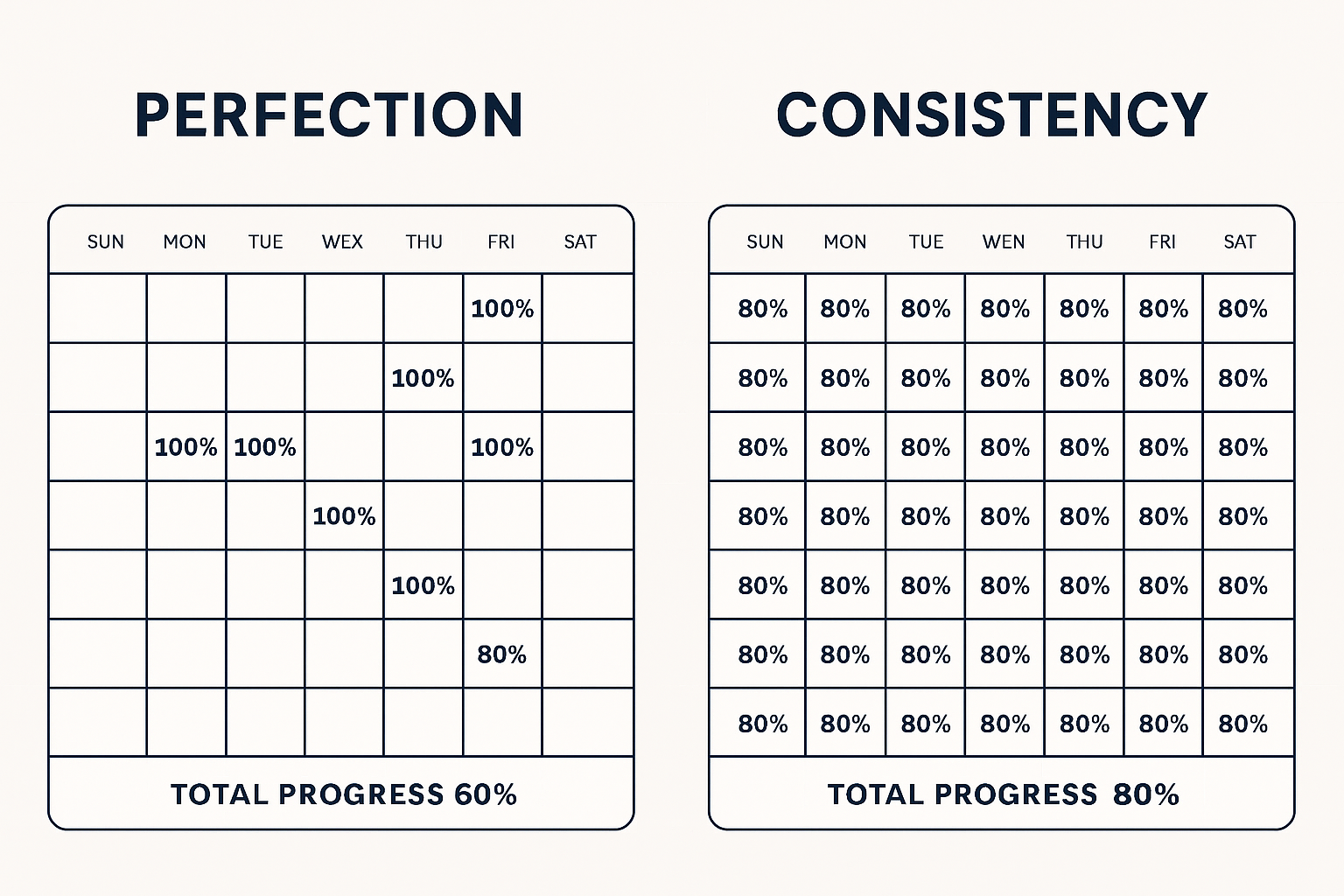The Power of Consistency Over Perfection


Most people start their fitness journey believing they need to be perfect—hit every workout, follow every meal plan, never miss a day. But perfection is an illusion.
Life happens. Work runs late. Kids get sick. Motivation fades.
When you expect perfection, every small setback feels like failure—and that’s what derails progress.
Consistency, not perfection, is what drives real, lasting change.
Consistency builds momentum, and momentum builds results.
When habits become automatic, you stop relying on motivation—you rely on rhythm.
Missing one workout or eating off-plan doesn’t erase progress. What matters is what you do most of the time, not every single time.
The athletes who show up regularly—even at 70%—outperform those who go all in for two weeks and burn out.
Every rep, every class reinforces movement patterns.
You don’t get good at snatches or pull-ups by doing them perfectly once—you get good by doing them often.
Three or four workouts a week for months beat seven straight days followed by three weeks off.
Small, repeatable efforts compound over time into significant, lasting change.
Regular training improves recovery, sleep, and overall performance.
Sporadic intensity leads to fatigue and frustration.
Your body—and your results—depend on steady effort.
Extreme calorie swings or restrictive diets create stress and hormonal imbalance.
Steady, balanced eating supports sustainable fat loss and consistent energy.
Tracking, planning, or simply making mindful food choices most days matters far more than hitting every macro target perfectly.
You don’t need flawless days—you need reliable ones.
Flexibility makes nutrition sustainable.
Allowing space for enjoyment turns “eating well” from a short-term challenge into a lifelong habit.
Consistency isn’t perfection—it’s persistence.
Perfection burns out. Consistency compounds.
If you can keep showing up—imperfectly but regularly—you’ll make more progress than anyone chasing flawless routines.
Discipline isn’t about doing it all; it’s about doing enough, often.